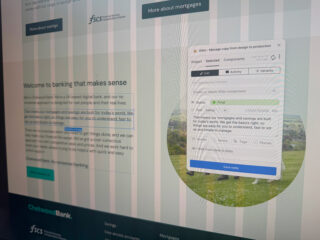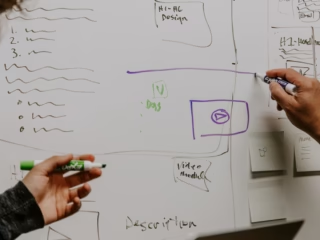If you’ve worked in UX for a while, you’ll know that one of the most important relationships you can build is with your development team. It doesn’t matter how good your designs are — if they’re not communicated clearly, or if there’s friction between teams, the end result won’t be what anyone hoped for.
Good communication with developers makes projects smoother, faster, and honestly, just more enjoyable for everyone. Here are some of the things I’ve learned that really help:
1. Share early, not just when it’s “done”
It’s tempting to keep polishing a design before showing it to developers, but sharing too late often means missing valuable technical input. I personally love to drop the devs, or any other stakeholders a Slack message and show them stuff that I’m working on as early as possible. Sometimes they provide an alternative viewpoint on a problem that I’m trying to solve, other times they completely shut my ideas down, dead! I’ve had it fed back to me on numerous occasions that various colleagues appreciate being kept in the loop.
2. Provide context, not just screens
Don’t just hand over a file and expect it to make sense. Explain why you’ve made certain design choices, what problem you’re solving, and what the user goal is. Developers are brilliant problem-solvers, and when they know the context, they’ll often help you find better solutions. I’ve got my own Figma file called “File Companion” that I generally attach to my projects, which contains comments, post-its and other miscellanous things that help contextualise what I’m designing.
3. Use the same language
It helps to learn a bit of their world. The terms they use, the frameworks they’re working with, even just understanding how tickets and backlogs are organised. It’s not about pretending to be a developer. It’s about showing respect for their craft and making the conversations flow more naturally. I also love the name Datadog. I’m not sure what it is 100% – but I still love the name.
4. Be clear about priorities
Not everything in a design file is equally important. If something is must-have for the experience, say so. If other parts are nice-to-haves, make that clear too. It helps the dev team focus on what matters most, especially when timelines are tight.
5. Stay curious and collaborative
Developers often come up with ideas that make designs better (cleaner, faster, easier to build) – communication is a two-way street, so make space for those conversations. At Chetwood we generally have a check-in session 2 days a week, where devs/UX-ers can bring problems/questions and get clear answers and plans of action.
6. Make handoff as smooth as possible
Whether you’re using Figma, Zeplin, or another tool (preferably Figma!) – keep your files tidy. Use clear labels, document interactions, and provide any assets they’ll need. A messy file not only slows everyone down, but can cause bloat within your design program of choice. Try and archive all of the legacy/old designs.
7. Be available for questions
Once things are in build, don’t disappear. Stay available for quick questions, clarifications, or last-minute tweaks. It saves endless Slack threads or awkward last-minute fixes when launch day is getting close. Schedule regular check-ins to go over any bugs that you may have found in development.
8. Give credit where it’s due
When things go well, shout about it. Let the wider team know that the dev team made that lovely animation happen or solved that tricky problem behind the scenes. Good relationships are built on trust and mutual respect.
At the heart of it, good communication with developers is just about being human — being open, honest, and collaborative. We’re all here for the same reason: to build something that works well and makes sense for the people using it.
And honestly, when UX and dev teams work well together, it’s one of the best parts of the job.




